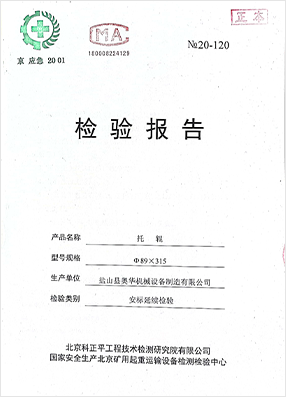 Afrikaans
Afrikaans  Albanian
Albanian  Amharic
Amharic  Arabic
Arabic  Armenian
Armenian  Azerbaijani
Azerbaijani  Basque
Basque  Belarusian
Belarusian  Bengali
Bengali  Bosnian
Bosnian  Bulgarian
Bulgarian  Catalan
Catalan  Cebuano
Cebuano  Corsican
Corsican  Croatian
Croatian  Czech
Czech  Danish
Danish  Dutch
Dutch  English
English  Esperanto
Esperanto  Estonian
Estonian  Finnish
Finnish  French
French  Frisian
Frisian  Galician
Galician  Georgian
Georgian  German
German  Greek
Greek  Gujarati
Gujarati  Haitian Creole
Haitian Creole  hausa
hausa  hawaiian
hawaiian  Hebrew
Hebrew  Hindi
Hindi  Miao
Miao  Hungarian
Hungarian  Icelandic
Icelandic  igbo
igbo  Indonesian
Indonesian  irish
irish  Italian
Italian  Japanese
Japanese  Javanese
Javanese  Kannada
Kannada  kazakh
kazakh  Khmer
Khmer  Rwandese
Rwandese  Korean
Korean  Kurdish
Kurdish  Kyrgyz
Kyrgyz  Lao
Lao  Latin
Latin  Latvian
Latvian  Lithuanian
Lithuanian  Luxembourgish
Luxembourgish  Macedonian
Macedonian  Malgashi
Malgashi  Malay
Malay  Malayalam
Malayalam  Maltese
Maltese  Maori
Maori  Marathi
Marathi  Mongolian
Mongolian  Myanmar
Myanmar  Nepali
Nepali  Norwegian
Norwegian  Norwegian
Norwegian  Occitan
Occitan  Pashto
Pashto  Persian
Persian  Polish
Polish  Portuguese
Portuguese  Punjabi
Punjabi  Romanian
Romanian  Russian
Russian  Samoan
Samoan  Scottish Gaelic
Scottish Gaelic  Serbian
Serbian  Sesotho
Sesotho  Shona
Shona  Sindhi
Sindhi  Sinhala
Sinhala  Slovak
Slovak  Slovenian
Slovenian  Somali
Somali  Spanish
Spanish  Sundanese
Sundanese  Swahili
Swahili  Swedish
Swedish  Tagalog
Tagalog  Tajik
Tajik  Tamil
Tamil  Tatar
Tatar  Telugu
Telugu  Thai
Thai  Turkish
Turkish  Turkmen
Turkmen  Ukrainian
Ukrainian  Urdu
Urdu  Uighur
Uighur  Uzbek
Uzbek  Vietnamese
Vietnamese  Welsh
Welsh  Bantu
Bantu  Yiddish
Yiddish  Yoruba
Yoruba  Zulu
Zulu head pulley tail pulley for belt conveyor
Understanding Head and Tail Pulleys in Belt Conveyors
Belt conveyors are essential components in various industries, facilitating the efficient transportation of materials from one point to another. Central to the functionality of these systems are the head and tail pulleys, which play pivotal roles in the movement and support of the conveyor belt. This article delves into the significance, functions, and design considerations of head and tail pulleys in belt conveyors.
What are Head and Tail Pulleys?
In a typical belt conveyor system, a head pulley is situated at the discharge end, while a tail pulley is located at the loading end. The head pulley drives the conveyor belt, enabling the transport of materials, while the tail pulley maintains the tension necessary for the proper functioning of the system. Together, they provide a complete loop that allows the belt to carry materials over various distances and elevations.
Importance of Head Pulleys
The head pulley is often the most critical component of a conveyor system. It is usually powered by an electric motor, which drives the belt forward. The design of the head pulley must take into account factors such as diameter, surface texture, and material of construction. In order to achieve optimal performance, head pulleys may incorporate features such as lagging to improve traction and reduce slippage. Proper alignment and maintenance of the head pulley are essential for preventing excessive wear on the belt and other components.
Role of Tail Pulleys
While the head pulley is responsible for driving the belt, the tail pulley serves several other crucial functions. It provides a stable anchorage point for the conveyor belt, maintaining the necessary tension that keeps the belt taut. This tension is vital, as it prevents sagging and ensures that the materials remain securely on the belt during transit. The tail pulley also facilitates the return path of the belt, allowing it to loop back to the head pulley.
Tail pulleys may also include features such as drum designs to assist in the self-cleaning process, while ensuring that the return belt remains clean and free of debris. This maintenance prevents material buildup, which could lead to inefficiencies or mechanical failures.
head pulley tail pulley for belt conveyor

Design Considerations
When designing or selecting head and tail pulleys, several factors need to be considered. The loading capacity, belt speed, and material type being transported all play significant roles in determining the appropriate pulley specifications. For instance, heavy loads may require larger diameter pulleys to manage the weight effectively and reduce stress on the belt.
Additionally, environmental conditions must also be taken into account. In harsh environments, materials such as corrosion-resistant steel or rubberized surfaces may be necessary to extend the lifespan of the pulleys. Moreover, the bearings and seals used in the pulley design are critical, as they affect how smoothly the pulley operates and how long it will last under continuous use.
Maintenance and Safety
Regular maintenance of head and tail pulleys is critical to the overall health of a belt conveyor system. This includes checking for proper alignment, monitoring for wear and tear, and ensuring that the pulleys are clean and free from debris. Neglecting these aspects can lead to costly downtime and repairs, as well as create safety hazards in the workplace.
Safety measures should also be in place to protect workers from potential hazards associated with operating conveyor systems. This includes emergency stop mechanisms, regular safety audits, and training for personnel on how to safely interact with the equipment.
Conclusion
In conclusion, head and tail pulleys are integral components of belt conveyors, playing vital roles in driving the system and maintaining belt tension. Understanding their functions, design considerations, and maintenance needs is essential for ensuring the efficient and safe operation of conveyor systems. With proper design and care, these pulleys can significantly enhance the performance of belt conveyors across various applications, making them indispensable in modern industrial processes.
-
Revolutionizing Conveyor Reliability with Advanced Rubber Lagging PulleysNewsJul.22,2025
-
Powering Precision and Durability with Expert Manufacturers of Conveyor ComponentsNewsJul.22,2025
-
Optimizing Conveyor Systems with Advanced Conveyor AccessoriesNewsJul.22,2025
-
Maximize Conveyor Efficiency with Quality Conveyor Idler PulleysNewsJul.22,2025
-
Future-Proof Your Conveyor System with High-Performance Polyurethane RollerNewsJul.22,2025
-
Driving Efficiency Forward with Quality Idlers and RollersNewsJul.22,2025





























